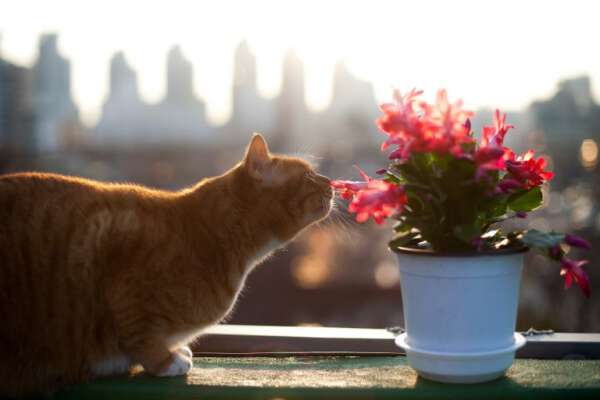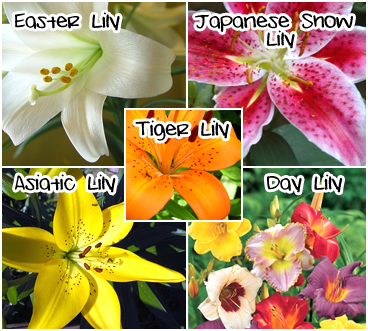
Household Hazards for Cats
They’re lurking quietly: in your kitchen; in your garden; in your medicine cabinet; on your nightstand. Substances potentially hazardous to your cat are everywhere.
Medications. Human medications are a very common cause of toxicity in cats. Cats have a unique metabolism, and some drugs that people tolerate well can be harmful or even fatal to cats. Non-steroidal anti-inflammatory drugs (NSAIDs) are particularly dangerous and include drugs such as aspirin, ibuprofen, and naproxen. Cats rarely eat these voluntarily. Sadly, most cases of NSAID toxicity are due to deliberate administration by well-meaning cat owners. Ingestion can result in stomach ulcers and severe kidney failure. Acetaminophen, the main ingredient in Tylenol, is often combined with other over-the-counter cold and flu preparations, such as Nyquil.
Acetaminophen is extremely toxic in cats. One regular (325 mg) or extra-strength (500 mg) tablet can be lethal. Other human medications commonly encountered by cats include antidepressants, cancer medications, and dietary supplements.
Food. Many cats (like my own cats, Mittens and Glitter) are very focused on food, and it is not beyond them to sneak something off of my plate if I’m not paying attention. Some human foods, however, can be poisonous to cats, such as grapes, raisins, avocado, onions, garlic, xylitol (a sweetener found in sugarless gums and candies), and chocolate. Fortunately, this is more of a theoretical concern because as carnivores, cats typically have very little interest in these foods. Some cats are weird, though, and I’d keep these foods out of reach, just to be safe.
Insecticides and Rodenticides. Ridding our homes, and our pets, of unwanted critters is a constant battle that can unwittingly put our beloved cats at risk. Flea control products containing permethrin that are designed for dogs can be dangerous or even deadly if accidentally (or deliberately, if ignoring the warnings on the label) applied to cats. Cats can be poisoned simply by sleeping near or grooming a dog recently treated with a topical permethrin product. Rat and mouse baits that are designed to attract rodents contain ingredients that are attractive to cats as well. Depending on the type of rodenticide, ingestion can be potentially life-threatening, resulting in bleeding, kidney failure, or seizures.

Plants. A variety of indoor and outdoor plants can pose a risk to your cat. These include poinsettias, mistletoe, holly, tulips, foxglove, philodendrons, amaryllis, baby’s breath, and hydrangeas. Most of these, if ingested, will cause gastrointestinal upset, i.e. nausea and/or vomiting, or perhaps irritation to the mouth and tongue. In terms of toxicity, however, lilies are in a class by themselves. True lilies (Lilium and Hemerocallis species), such as Tiger, Day, Asiatic, Easter, and Japanese Show lilies, are among the deadliest plants for cats. All parts of the plant (even the pollen!) are toxic, and small ingestions (two or three petals or leaves) can result in terrible kidney failure. If you learn only one thing from this article, let it be this: If you own a cat, do not bring lilies into your house. Ever.
Essential Oils and Potpourri. We all love a nice-smelling environment, but we must be cautious when that environment includes cats. Essential oils are extracted from plants and are used in many products, from perfumes to herbal headache remedies. They are easily absorbed through mucous membranes and often through the skin as well, irritating the membranes and the gastrointestinal system. Cationic detergents are often used in fabric softeners, germicides, and sanitizers. Skin, when exposed to cationic detergents, may become red, swollen, ulcerated, and painful. Liquid potpourris are popular, especially during the holidays. Potpourri solutions are simmered in pots that are heated, usually by a candle, releasing the fragrance. The fragrance is harmless to cats, but the water containing the potpourri is not. Liquid potpourris may contain essential oils as well as cationic detergents, both of which are toxic if swallowed. In addition, the hot liquid can burn a cat’s skin.
Speaking of potpourri. It would almost be impossible to cover the myriad items that could pose a danger to our feline friends. Here’s my personal potpourri of potential problems you may never have considered:
- Household cleaners: Bleaches, detergents, and disinfectants can irritate the respiratory tract if inhaled. Cats walking on floors treated with cleaners may lick their paw pads, exposing themselves unwittingly. Confine kitty until surfaces are dry.
- Venetian blinds: Cats (kittens especially) can strangle themselves on venetian blind cords. Keep cords elevated and out of reach.
- Ironing board and iron. Cats enjoy exploring elevated surfaces, and an ironing board may be enticing. They are rickety, however, and a hot iron resting on it is double trouble. Confine your cat until the ironing is completed, and put the ironing board away promptly.
- Treated toilet water: Disinfectant cakes or tablets are convenient for keeping our toilets clean, but can be dangerous if your cat drinks the treated water. If you can’t avoid using them, keep that lid down!
- Thread, string, tinsel, ribbons, dental floss: Cats love to play with stringy things. If swallowed, though, a string may cause an intestinal obstruction that can damage the intestines and require expensive surgery to remove. Keep sewing kits out of reach, make sure the bathroom trash can has a lid, and skip the tinsel at Christmas.
- Washer and dryer: Cats are curious by nature, and there is no shortage of tales of cats napping in a washer or dryer that gets accidentally turned on. Make it a habit to always check these machines before starting them.
- Open windows: Warm weather leads to open windows. Cats are usually agile and careful, but birds or butterflies that pass by can throw cats off balance. Make sure all windows have sturdy screens.
The environment we provide for our feline friends is usually safe and secure, however, hidden hazards abound. An increased awareness of some potential perils is important in keeping our cats happy, healthy, and out of harm’s way.
Sidebar: Winter Warnings.
Cold weather can pose some dangers to cats, especially those that spend some time outdoors. The main concerns:
- Frostbite and hypothermia: cats are at risk, just like humans. Cats that go outdoors should always have the option of coming inside.
- Antifreeze: the sweet smell and taste of antifreeze can be enticing to cats. It is highly toxic, though, and even small amounts can be harmful or fatal.
- Chemical ice melts and salts: the products that we use to de-ice sidewalks and driveways can lead to chapped, dry, painful paw pads in cats. These chemicals may be ingested when cats lick their paws.
- Winter holiday hazards: Christmas is fun for the family, but holiday foods (chocolate, alcohol), plants (holly, lilies) and decorations (ribbons, tinsel) can be troublesome, as mentioned above.
ALSO CHECK OUT: 5 Dangerous Places Where Indoor Cats Can Get Stuck
